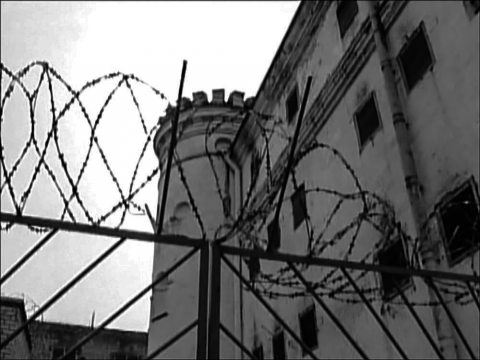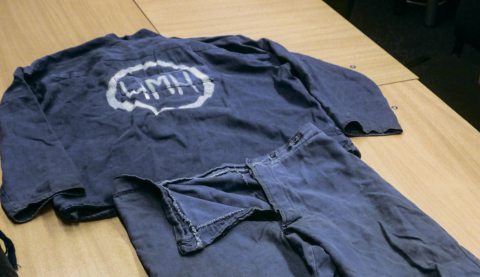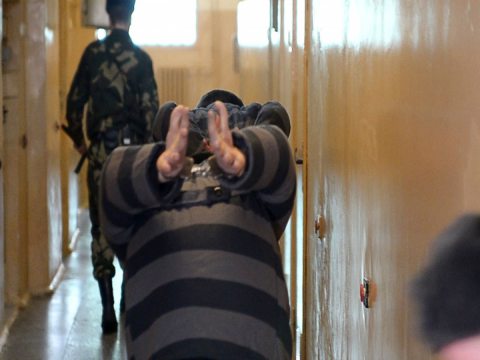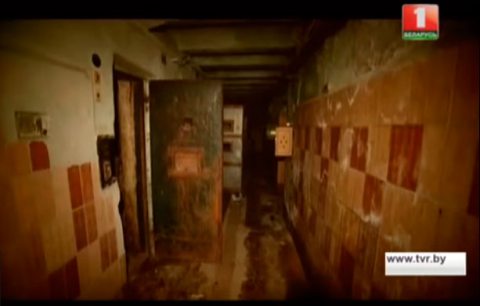Death row secrets. Part 2
-

- The old building of the Piščala Castle
The topic of the death penalty is still a dark secret in Belarus. The public knows very little about the conditions of those held on death row. We only know that after the verdict they are for a while imprisoned in a jail in the center of Minsk. Therefore, human rights defenders are always trying to glean the necessary information. Representatives of the campaign “Human Rights Defenders against the Death Penalty in Belarus” have gathered memories and testimonies of former prison staff and former inmates, their family members, part of which has been used to prepare this publication. For obvious reasons, these people asked not to disclose their names.
Hope is the last to die
After sentencing, the death convicts have the opportunity to appeal the verdict to the Criminal Board of the Supreme Court. Almost all the convicts use this right, many thoroughly prepare for the hearing, which leaves them a feeble hope for life.
During the time, the death convicts are held in jail No. 1, or with a few exceptions in the KGB jail. They are given special clothing, which they must wear at all times.
According to one of the former employees of Valadarka, “the uniform is either blue or gray with the letters IMN on the back” [‘isklyuchitelnaya mera nakazaniya’, ‘exceptional punishment’]. The inscription is either embroidered or painted or written in chalk.”
Volha Hrunova, the mother of Aliaksandr Hrunou who was executed for the murder of his friend, received by mail her son’s prison uniform and shoes in which he was on death row. The parcel was labelled ‘to be called for’. The clothes consist of several items: a hat, shoes, a blue-gray jacket and matching pants. The jacket has white painted inscription ‘IMN’.
When preparing for the trial, the prisoners can meet with their defenders. However, this happens in a different building. A former defendant S tells about it:
“When death convicts are brought, for example, to a lawyer, this is a completely separate procedure and a ritual.
At this time, all other movements of prisoners in jail are prohibited. They are escorted along the shortest path across the street. At this time, the prisoners are prohibited to look out of the windows. But the prisoners are always aware that in this case it’s either a death convict or a criminal boss that is being escorted out there. In the course of this action, all the doors are opened and closed automatically. The death convict is quickly escorted through the corridors. He flies like a bird, he does not even have time to look around.
The office where lawyers or investigators meet with the death convicts has barred windows, but the handcuffs are removed during the meetings. The guards remain in the corridor.”
After the appeal has been considered in the Supreme Court, the death convict has only an illusory chance for salvation – the President’s pardon. At the same time, the Pardon Commission considers all cases of death sentences, regardless of the prisoner’s petition.
From that day on, they can only walk along the corridor on death row to be executed. And there are nearly no exceptions at all.
“However, in April 1999 Viasna received a letter from Siarhei Pratsirayeu. He wrote from a prison in the town of Hlybokaje. His death penalty was commuted to life imprisonment. It is believed that Siarhei Pratsirayeu was the only death convict to be pardoned by the President before 2001.”
The moment of the ‘rule of law’
Peculiarities of executing death sentences are described in several sources. Aleh Alkayeu, former head of the detention center No. 1, was one of the first to tell about it:
“Through the underpass, employees of the special squad began to take out the convicts one by one. They were dressed in striped clothes and had felt slippers on. Their hands were tied behind their backs. They trembled either from cold or from fear, and their crazy eyes radiated such a real horror that it was impossible to look at them. Then the procedure of reading out the President’s decision began. The prosecutor routinely specified the personal data of the person standing in front of us, then as usual he announced a decision to refuse pardon...
...The convict’s eyes are bandaged so that he could not be oriented, and he is taken to an adjacent specially equipped room, where the executioner is waiting with a loaded gun. At a signal from the executioner two members of the squad lower the convict on his knees before a special bullet-stopping shield, after which the executioner shoots him in the head.”
What happens then is told in detail in Slavamir Antanovich’s book Prisoners of the Piščala Castle, which describes the case of Aliaksandr Mezin executed in 1991:
“The doctor was the first to enter the execution room, all the rest followed him. Mezin was lying on the floor with his face down, stretched to the entire length of his big body, he was still alive... Someone suggested another shot, but the doctor said that this was no longer necessary. Inhaling the gun smoke, we exchanged empty words. Only the executioner’s assistant said: “You know, he said before his death, ‘My heart is still beating’.”
The execution was documented in a report.
Mezin’s body was taken to the mortuary in one of the Minsk hospitals where the doctor took the bullet out of the head and issued a death certificate. Using the certificate, the officers of the firing squad received the following day a coffin in which they buried the executed prisoner next to the homeless and other unidentified persons.”
An employee of the Valadarka prison told human rights defenders about the signs that help the guards and the inmates know the exact time of executions. Moreover, the death convicts can tell who is coming to them by their steps.
“When a death sentence is executed, all the guards are removed from jail, usually at night, so that the prisoners could not learn about it and arrange an escape or rebellion. Everyone is forced to leave except for one assistant chief on duty. It is most likely that all the employees are kept in the yard.
Every employee knows that when they are removed from their sentry, there’s an execution in progress, since they can only be removed on one occasion.
They shoot them in Valadarka, it is very convenient. The bodies are transported to the morgue, and then to the North Cemetery and cremated.”
It should be added that human rights activists do not share this view, as there are alternative evidence that the executed prisoners are buried in numbered graves for unidentified persons so that they could be exhumed, if necessary.







